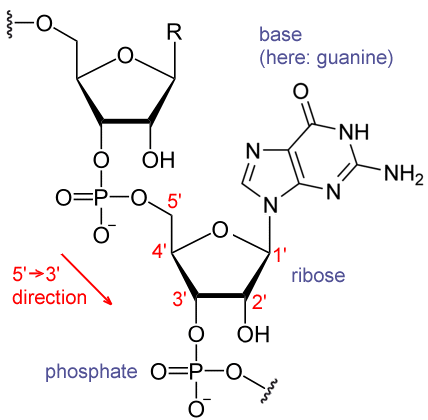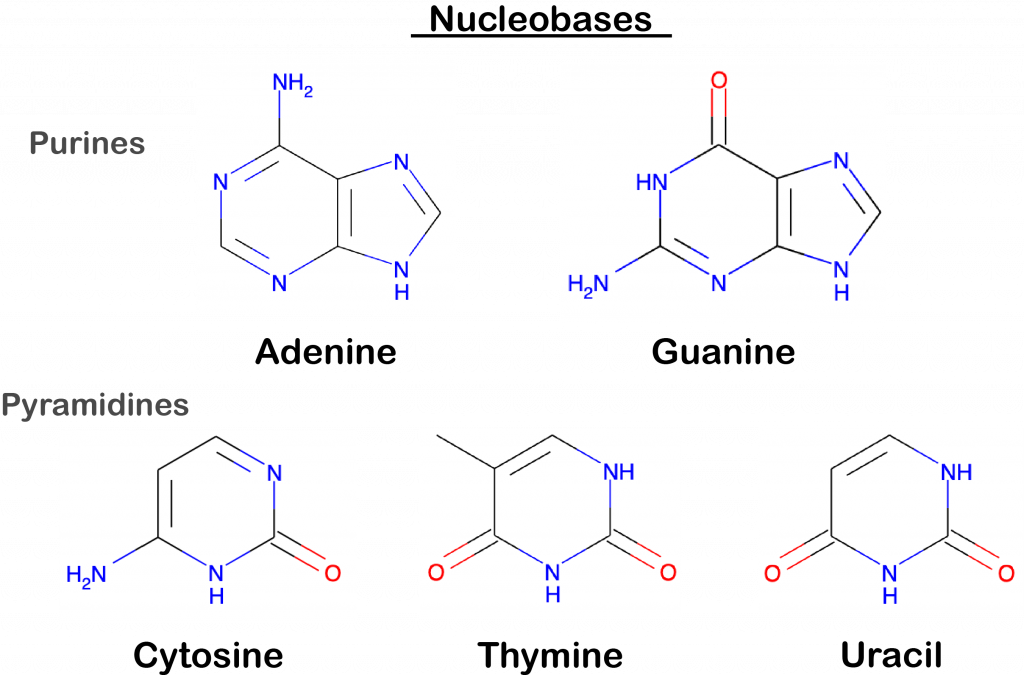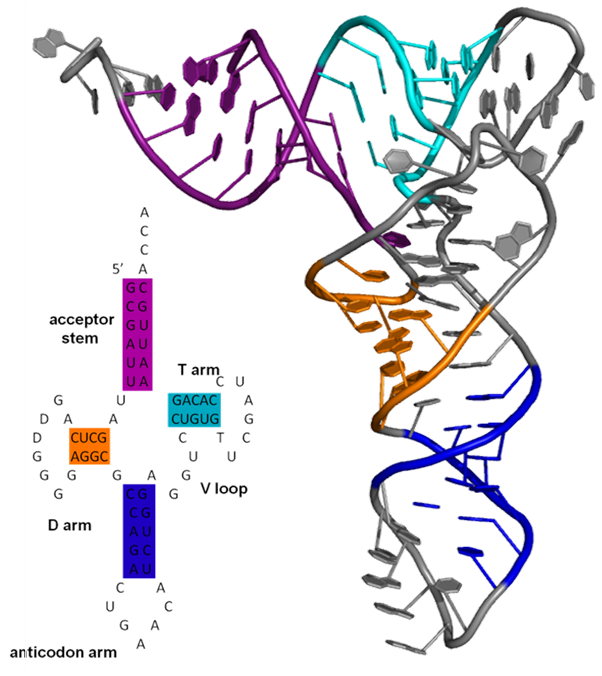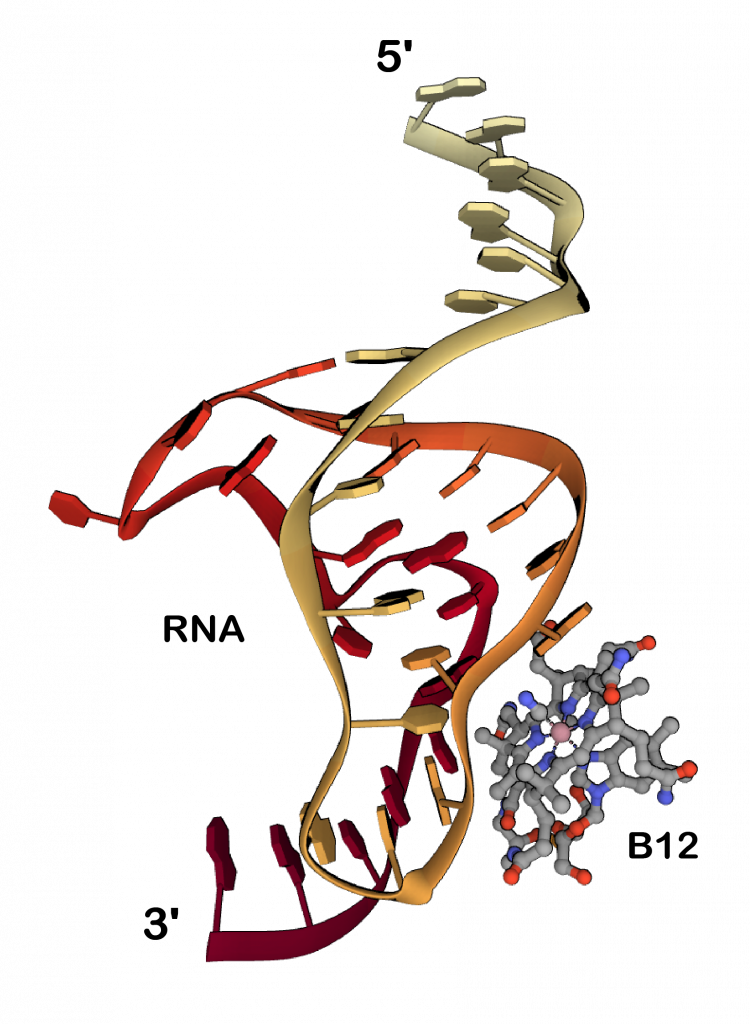RNA
Like DNA, RNA (ribonucleic acid) is essential for all known forms of life. RNA monomers are also nucleotides. Unlike DNA, RNA in biological cells is predominantly a single-stranded molecule. While DNA contains deoxyribose, RNA contains ribose, characterised by the presence of the 2′-hydroxyl group on the pentose ring (Figure 5). This hydroxyl group make RNA less stable than DNA because it is more susceptible to hydrolysis. RNA contains the unmethylated form of the base thymine called uracil (U) (Figure 6), which gives the nucleotide uridine.


RNA performs a variety of functions in the cell. Messenger RNA (mRNA) carries the genetic information that directs the synthesis of proteins. Some viruses use RNA instead of DNA as their genetic material. Most of the RNA, however, does not code for proteins. These RNAs are called noncoding (ncRNA) and can be encoded by their own RNA genes or can derive from mRNA introns. Transfer RNA (tRNA) and ribosomal RNA (rRNA) are involved in the process of translation. There are also non-coding RNAs involved in gene regulation, RNA processing, and other processes.
Most RNA molecules contain short self-complementary sequences that fold and pair with each other into highly structured forms. These base-pairing interactions are part of RNA secondary structure. The unpaired regions form structures such as hairpin loops, bulges and internal loops, which may be of functional importance (Figure 7). Examples include Rho-independent terminator stem-loops and the tRNA cloverleaf.

The functional form of single-stranded RNA molecules, just like proteins, typically require a specific tertiary (3D) structure. RNA can also form RNA-RNA and DNA-RNA duplexes. Most RNA structures in the Protein Data Bank (PDB) (archive of macromolecular structural data) (3) contain double-stranded RNA folded into tertiary structures.
Some RNA structures provide binding sites for other molecules and have chemically active centres. An example, (Figure 8) is the molecular recognition of vitamin B12 by an RNA structure (4). Vitamin B12 binding to RNA regulates hepatitis C virus function (5).
